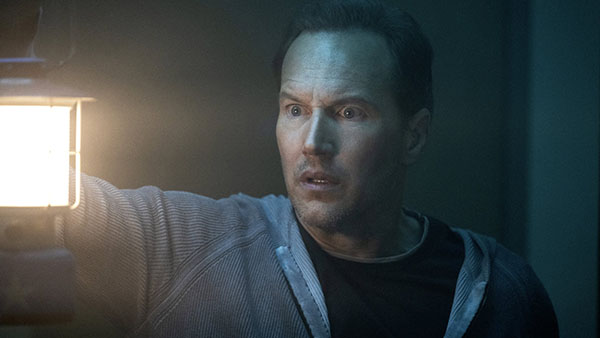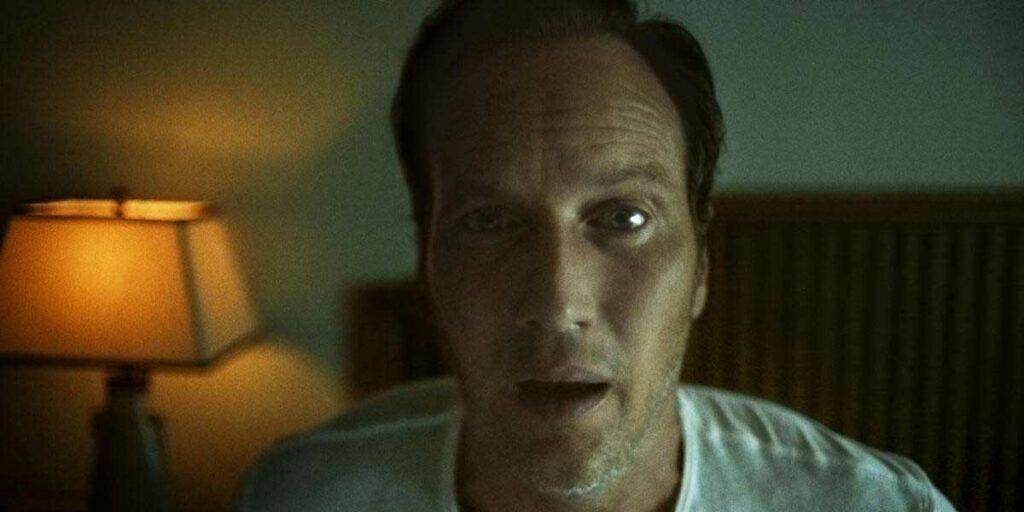While Insidious: The Red Door doesn’t have the most satisfying conclusion, it excels with effective suspense building and jump scares.
Thirteen years after the release of Insidious in 2010, the popular Blumhouse franchise has returned for its fifth and final chapter, Insidious: The Red Door. As a big fan of the first two films, with masterful screenplays by Leigh Whannell, and impeccable directing from James Wan, I was excited for the return of the original cast, and a conclusion to The Lamberts story under the watchful eye of Patrick Wilson in his directorial debut.
At the beginning of Insidious: The Red Door, in a never-before-seen flashback sequence to the Insidious: Chapter 2 timeline, viewers witness Dalton (Ty Simpkins) and Josh (Wilson) being hypnotized, as the events of The Further are wiped from their memories. Nine years later in the present day, the family appears to have been living a supernatural-free existence and are mourning the recent death of a relative.
Dalton, now a teenager, is about to set off to college, and Renai (Rose Byrne) suggests that Josh drive their son to his new school. It’s apparent from the get-go that the father and son have a strained relationship, as the pair struggle to connect during the journey, and friction exists between the two. However, when Dalton is asked to tap into his emotional side and draw a picture during his newly attended art class, he unknowingly opens a door back to The Further, which in turn rebuilds his relationship with his father.
The return of the original cast is the biggest highlight in the franchise’s final installment and makes Insidious: The Red Door more impactful. It was a delight to see Simpkins return to the role after ten years, and he shines as Dalton. Simpkins not only adequately showcases a teen who is dealing with anger due to his father’s recent absence in his life, but he also reflects a young man who is adjusting to life away from home, as traumatic events from his past resurface.

Wilson and Byrne reprising their roles is a joy to see, though Wilson has a lot more depth to his story compared to Byrne, who is underutilized. Her lack of screen time in Insidious: The Red Door is justified due to the direction of the plot, but as such a major part of the first two films, more appearances from the star and a more fleshed-out story for Renai would have been welcomed.
Since Insidious 1 and 2, I have missed James Wan behind the camera, but Wilson’s directing is impressive, and he does a stellar job completing the trilogy. There are moments in Insidious: The Red Door that creeped me out, with Wilson excelling in suspense building and the execution of multiple jump-scares that deliver. Each fright is well placed as opposed to being present just for the sake of a cheap thrill and accompanied by impactful sound design that makes such moments even spookier.
The screenplay also successfully balances varying genres. Though a horror film, the strained relationship between Josh and Dalton leans more into the drama side of things, while the newly cast Sinclair Daniel levels out intense moments with her comedic and playful side while portraying Dalton’s college roommate Chris.
The biggest downfall of Insidious: The Red Door arrives during the third act with a rushed anticlimactic ending, which isn’t the most satisfying conclusion, and leaves more to be desired. With that said, the journey to the end is certainly worth the watch for lovers of the franchise who are looking for a solid horror flick to indulge in. In addition, the return of the original cast brings a sense of nostalgia to Insidious: The Red Door which is sure to keep dedicated fans invested in the story.
Insidious: The Red Door is out now globally in theaters.

